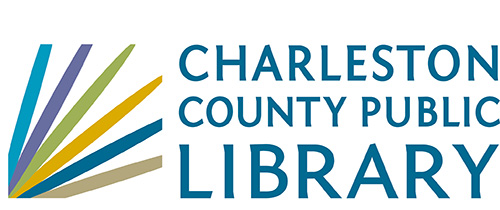Menu
×
John L. Dart Library
9 a.m. – 7 p.m.
Phone: (843) 722-7550
West Ashley Library
9 a.m. – 7 p.m.
Phone: (843) 766-6635
Folly Beach Library
Closed
Phone: (843) 588-2001
Edgar Allan Poe/Sullivan's Island Library
Closed for renovations
Phone: (843) 883-3914
Wando Mount Pleasant Library
9 a.m. – 8 p.m.
Phone: (843) 805-6888
Village Library
9 a.m. – 6 p.m.
Phone: (843) 884-9741
St. Paul's/Hollywood Library
9 a.m. – 8 p.m.
Phone: (843) 889-3300
Otranto Road Library
9 a.m. – 8 p.m.
Phone: (843) 572-4094
Mt. Pleasant Library
9 a.m. – 8 p.m.
Phone: (843) 849-6161
McClellanville Library
9 a.m. - 6 p.m.
Phone: (843) 887-3699
Keith Summey North Charleston Library
9 a.m. – 8 p.m.
Phone: (843) 744-2489
John's Island Library
9 a.m. – 8 p.m.
Phone: (843) 559-1945
Hurd/St. Andrews Library
9 a.m. – 8 p.m.
Phone: (843) 766-2546
Miss Jane's Building (Edisto Library Temporary Location)
9 a.m. – 6 p.m.
Phone: (843) 869-2355
Dorchester Road Library
9 a.m. – 8 p.m.
Phone: (843) 552-6466
Baxter-Patrick James Island
9 a.m. – 8 p.m.
Phone: (843) 795-6679
Main Library
9 a.m. – 8 p.m.
Phone: (843) 805-6930
Bees Ferry West Ashley Library
9 a.m. – 8 p.m.
Phone: (843) 805-6892
Mobile Library
9 a.m. - 5 p.m.
Phone: (843) 805-6909
Today's Hours
John L. Dart Library
9 a.m. – 7 p.m.
Phone: (843) 722-7550
West Ashley Library
9 a.m. – 7 p.m.
Phone: (843) 766-6635
Folly Beach Library
Closed
Phone: (843) 588-2001
Edgar Allan Poe/Sullivan's Island Library
Closed for renovations
Phone: (843) 883-3914
Wando Mount Pleasant Library
9 a.m. – 8 p.m.
Phone: (843) 805-6888
Village Library
9 a.m. – 6 p.m.
Phone: (843) 884-9741
St. Paul's/Hollywood Library
9 a.m. – 8 p.m.
Phone: (843) 889-3300
Otranto Road Library
9 a.m. – 8 p.m.
Phone: (843) 572-4094
Mt. Pleasant Library
9 a.m. – 8 p.m.
Phone: (843) 849-6161
McClellanville Library
9 a.m. - 6 p.m.
Phone: (843) 887-3699
Keith Summey North Charleston Library
9 a.m. – 8 p.m.
Phone: (843) 744-2489
John's Island Library
9 a.m. – 8 p.m.
Phone: (843) 559-1945
Hurd/St. Andrews Library
9 a.m. – 8 p.m.
Phone: (843) 766-2546
Miss Jane's Building (Edisto Library Temporary Location)
9 a.m. – 6 p.m.
Phone: (843) 869-2355
Dorchester Road Library
9 a.m. – 8 p.m.
Phone: (843) 552-6466
Baxter-Patrick James Island
9 a.m. – 8 p.m.
Phone: (843) 795-6679
Main Library
9 a.m. – 8 p.m.
Phone: (843) 805-6930
Bees Ferry West Ashley Library
9 a.m. – 8 p.m.
Phone: (843) 805-6892
Mobile Library
9 a.m. - 5 p.m.
Phone: (843) 805-6909
Patron Login
menu
Item request has been placed!
×
Item request cannot be made.
×
 Processing Request
Processing Request
Impact of blur on clinical and occupational colour vision test results.
Item request has been placed!
×
Item request cannot be made.
×
 Processing Request
Processing Request
- Author(s): Álvaro, Leticia; Formankiewicz, Monika A.; Waugh, Sarah J.
- Source:
Ophthalmic & Physiological Optics; Sep2024, Vol. 44 Issue 6, p1058-1071, 14p- Subject Terms:
- Source:
- Additional Information
- Abstract: Purpose: To evaluate whether colour vision normal (CVN) adults pass two Fletcher–Evans (CAM) lantern tests and to investigate the impact of imposed blur on Ishihara, CAM lantern and computerised colour discrimination test (colour assessment and diagnosis test [CAD] and Cambridge colour test [CCT]) results. Methods: In a pilot experiment, 20 (16 CVN and 4 colour vision deficient [CVD]) participants with normal VA were tested with the CAM lantern. In the main experiment, the impact of imposed dioptric blur (up to +8.00 D) on visual acuity and the Ishihara test, CAM lantern, CAD and CCT was assessed for 15 CVN participants. Results: CVN participants can fail the CAM lantern, with specificity of 81.25% (aviation mode) and 75% (clinical mode), despite following the test requirements of participants having at least 0.18 logMAR (6/9) in the better eye. With blur, test accuracy was affected. As expected, significant detrimental effects of blur on test results were found for logMAR VA and CAM lantern (aviation) with +1.00 D or higher. Ishihara, CAD and CCT results were not detrimentally affected until +8.00 D. Yellow‐blue discrimination was more affected by blur for the CAD than the CCT, which was not explained by the different colour spaces used or vectors tested. Conclusion: False‐positive findings on lantern colour vision tests with small apertures are likely to be increased in patients with blur due to uncorrected refractive error or ocular and visual pathway disease. Other colour vision tests with larger stimuli are more robust to blur. [ABSTRACT FROM AUTHOR]
- Abstract: Copyright of Ophthalmic & Physiological Optics is the property of Wiley-Blackwell and its content may not be copied or emailed to multiple sites or posted to a listserv without the copyright holder's express written permission. However, users may print, download, or email articles for individual use. This abstract may be abridged. No warranty is given about the accuracy of the copy. Users should refer to the original published version of the material for the full abstract. (Copyright applies to all Abstracts.)
- Abstract:
Contact CCPL
Copyright 2022 Charleston County Public Library Powered By EBSCO Stacks 3.3.0 [350.3] | Staff Login


No Comments.